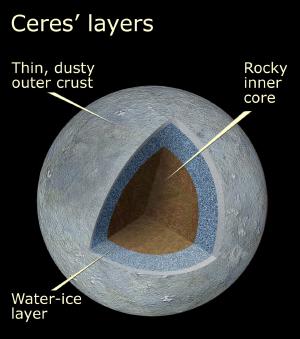Blog
A Glorious Dawn
20 January 2015
The Dawn spacecraft is on its way to Ceres, and has started sending back new images of the dwarf planet. The images are still pretty pixelated at this point, but we can begin to see features such as craters on the surface. Once considered a planet, then an asteroid, it is now considered a dwarf planet, and Dawn’s study of Ceres is likely to find several interesting surprises.
 NASA/ESA/STScI
NASA/ESA/STScIWe already know, for example, that Ceres has water. Spectroscopy of its surface shows that it contains hydrated material, and we’ve observed water vapor within Ceres’ thin atmosphere. Yes, Ceres has an atmosphere, but it isn’t remotely thick like Earth’s or even that of Mars. Because of this, it’s thought that Ceres has a rocky core with a mantle of water-ice. There are even some who speculate that Ceres could have liquid water within its interior, but that isn’t thought to be very likely.
The approach to Ceres marks the second body the Dawn spacecraft has visited. It has already visited and orbited Vesta, giving us a detailed analysis of its geology and history. As it orbits and eventually lands on Ceres, it will likely do the same for the smallest of dwarf planets.